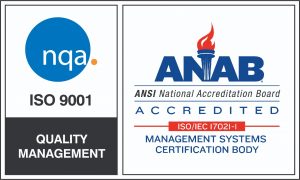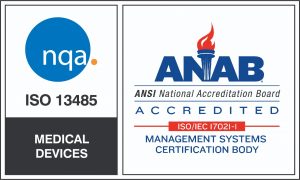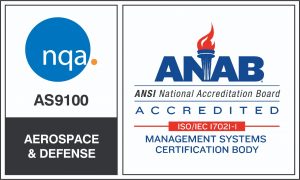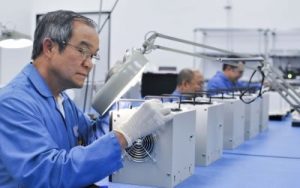 Box-build, or system integration, is an electromechanical assembly process which includes enclosure fabrication, installation and routing of cabling or wire harnesses, and installation of sub-assemblies and components. A complex box-build includes a fully integrated electro-mechanical system with pneumatics and electronics.
Box-build, or system integration, is an electromechanical assembly process which includes enclosure fabrication, installation and routing of cabling or wire harnesses, and installation of sub-assemblies and components. A complex box-build includes a fully integrated electro-mechanical system with pneumatics and electronics.
Box-builds generally include several steps. Companies often find the process too difficult and/or costly to handle in-house. This is perhaps the biggest reason why many companies enlist the help of an experienced contract manufacturer. Using a contract manufacturer not only keeps costs and production times low, it also ensures the correct assembly and testing.
When selecting a contract manufacturer to work with, it’s important to look for a CM with complex box-build experience. Make sure the company you choose has a quality management system in place and ISO certification.
Once you’ve selected a contract manufacturer, it’s important to prepare everything they need to complete the box-build.
Bill of Materials (BOM)
Be prepared to present the contract manufacturer with a Bill of Materials. The BOM is extremely important to the overall success of your project. The BOM helps ensure the contract manufacturer knows all the key components. It also lets them know which materials the company will provide and what the CM must source. Defining even smaller items in the BOM such as nuts, bolts, adhesives, tie wraps, washers, wires, etc. helps avoid unexpected delays and cost changes.
Assembly
3D CAD models help the CM visualize the finished product. These should be provided to the CM if possible. At the very least, you should provide the CM with a layout drawing. Many experienced CMs have CAD programs that allow them to easily convert drawings into build instructions.
Dimensions
It’s important to inform the contract manufacturer of the size and weight of the unit. This will help the CM determine handling and storage throughout the build process.
Testing
When working with electrical systems, it’s important to define basic electrical safety testing like earth bond and flash tests. It might be helpful to speak with your contract manufacturer to determine any additional testing required.
Means Engineering has extensive experience in both module level and product level manufacturing of complex box builds. Our skilled staff has the tools and experience necessary to provide a wide range of manufacturing services for fluid and gas handling systems, commercial and military displays, high tech vacuum systems, aviation electronics, and electro-optical systems.
Please contact us for more information about our services.
 The Internet has created numerous opportunities for entrepreneurs and small businesses to sell their products to people around the world. While selling products online can bring significant income, many businesses simply do not know how to meet extremely high consumer demand.
The Internet has created numerous opportunities for entrepreneurs and small businesses to sell their products to people around the world. While selling products online can bring significant income, many businesses simply do not know how to meet extremely high consumer demand.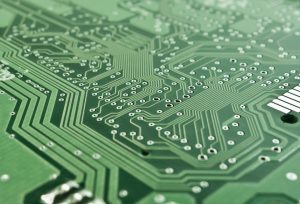 Many electronics companies outsource some or all parts of production. This probably has something to do with the high cost of in-house production. Even if a company can manage the cost of equipment, people, and the technology needed to produce products themselves, it’s extremely difficult to keep up with rising consumer demand for quality electronics. Unfortunately, releasing just one poor quality device could negatively impact company reputation and the ability to obtain a steady flow of repeat and new business.
Many electronics companies outsource some or all parts of production. This probably has something to do with the high cost of in-house production. Even if a company can manage the cost of equipment, people, and the technology needed to produce products themselves, it’s extremely difficult to keep up with rising consumer demand for quality electronics. Unfortunately, releasing just one poor quality device could negatively impact company reputation and the ability to obtain a steady flow of repeat and new business. Different companies have different needs. When selecting a contract manufacturer, it’s important to consider these needs as well as any future requirements. Although you might not have any immediate plans to move into new markets, this might change as your business grows. Make sure you choose a CM that can grow and scale with your business needs.
Different companies have different needs. When selecting a contract manufacturer, it’s important to consider these needs as well as any future requirements. Although you might not have any immediate plans to move into new markets, this might change as your business grows. Make sure you choose a CM that can grow and scale with your business needs. In today’s competitive world, consumers expect new products to hit the shelf at a faster rate than ever before. This creates challenges for companies responsible for the creation and development of new products. While company innovators may come up with fresh ideas all the time, it takes time and resources to create design plans and bring new products to market. It also takes a lot of people, equipment, space, and technology. This is especially true for companies creating high-end electronic products.
In today’s competitive world, consumers expect new products to hit the shelf at a faster rate than ever before. This creates challenges for companies responsible for the creation and development of new products. While company innovators may come up with fresh ideas all the time, it takes time and resources to create design plans and bring new products to market. It also takes a lot of people, equipment, space, and technology. This is especially true for companies creating high-end electronic products.